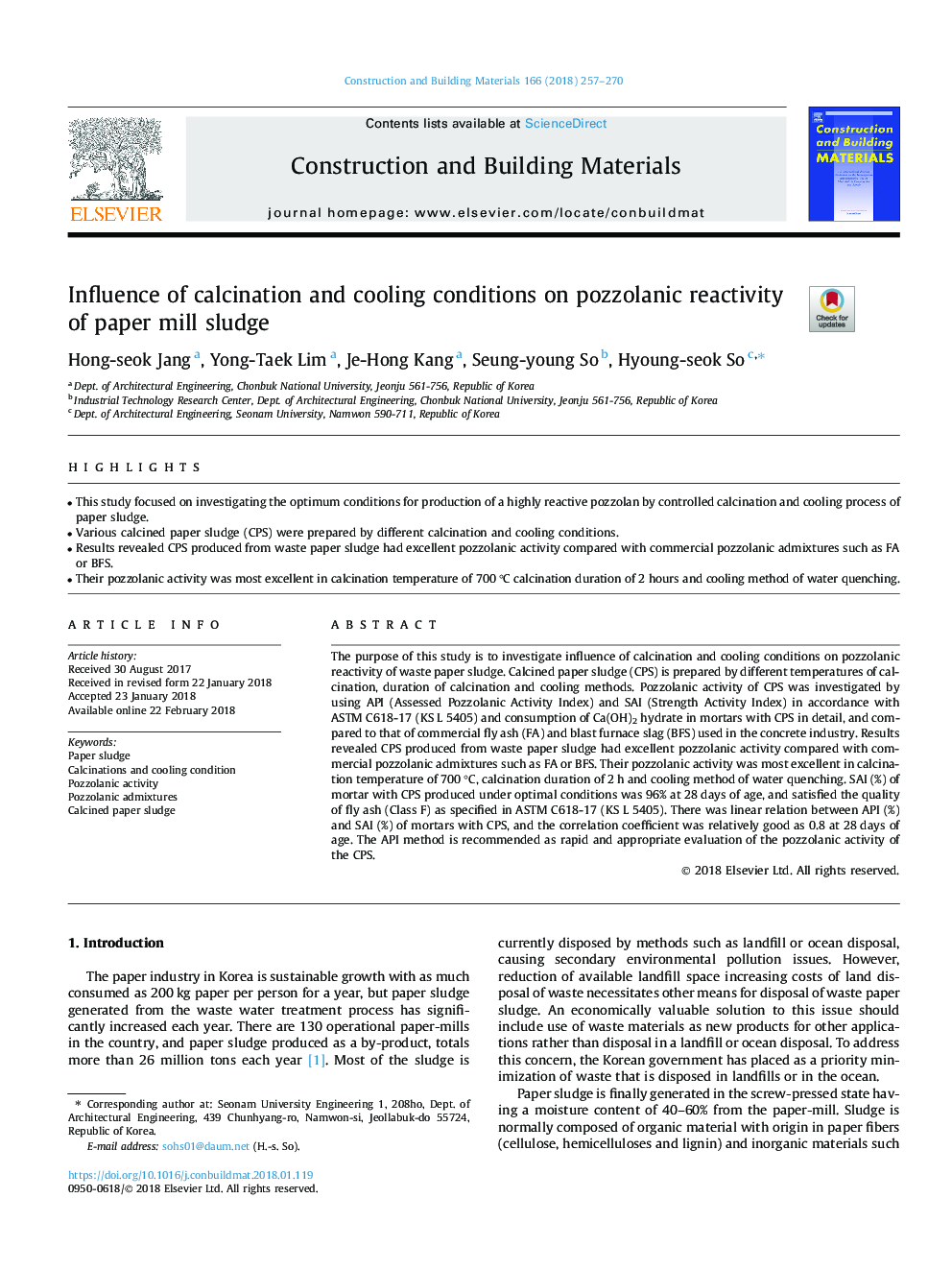| Article ID | Journal | Published Year | Pages | File Type |
|---|---|---|---|---|
| 6715220 | Construction and Building Materials | 2018 | 14 Pages |
Abstract
The purpose of this study is to investigate influence of calcination and cooling conditions on pozzolanic reactivity of waste paper sludge. Calcined paper sludge (CPS) is prepared by different temperatures of calcination, duration of calcination and cooling methods. Pozzolanic activity of CPS was investigated by using API (Assessed Pozzolanic Activity Index) and SAI (Strength Activity Index) in accordance with ASTM C618-17 (KS L 5405) and consumption of Ca(OH)2 hydrate in mortars with CPS in detail, and compared to that of commercial fly ash (FA) and blast furnace slag (BFS) used in the concrete industry. Results revealed CPS produced from waste paper sludge had excellent pozzolanic activity compared with commercial pozzolanic admixtures such as FA or BFS. Their pozzolanic activity was most excellent in calcination temperature of 700â¯Â°C, calcination duration of 2â¯h and cooling method of water quenching. SAI (%) of mortar with CPS produced under optimal conditions was 96% at 28â¯days of age, and satisfied the quality of fly ash (Class F) as specified in ASTM C618-17 (KS L 5405). There was linear relation between API (%) and SAI (%) of mortars with CPS, and the correlation coefficient was relatively good as 0.8 at 28â¯days of age. The API method is recommended as rapid and appropriate evaluation of the pozzolanic activity of the CPS.
Keywords
Related Topics
Physical Sciences and Engineering
Engineering
Civil and Structural Engineering
Authors
Hong-seok Jang, Yong-Taek Lim, Je-Hong Kang, Seung-young So, Hyoung-seok So,
